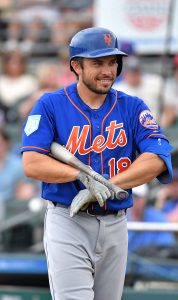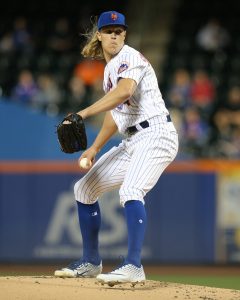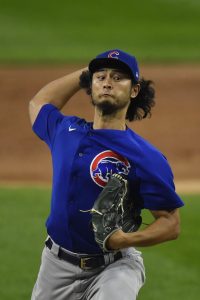On February 13th, 2018 the Cubs officially announced a six-year, $126MM agreement with free agent Yu Darvish. After splitting the 2017 season between the Rangers and Dodgers, Darvish was the top free agent on MLBTR’s list of available players that winter. Little did we know at the time that Darvish would spent only half the length of that contract in a Cubs uniform.
At the time, Darvish seemed like a much-needed injection of frontline rotation talent for the Cubs. After falling to the Dodgers in the NLCS in their title defense season, swiping Darvish from the Dodgers had the potential to swing a potential rematch in seasons to come.
That rematch wouldn’t come to pass, however. Darvish would make just nine starts for the Cubs in the 2018 season. Though they won 95 games, Joe Maddon’s club stumbled into a wild card spot before losing the wild card game to the Rockies on a Tony Wolters RBI single in the 13th inning.
The timing was never quite right for Darvish and the Cubs. He was better in his second season in Chicago, but not good enough to change the fortunes of their fledgling contender. Darvish finished second for the NL Cy Young during the pandemic-shortened 2020 season, but they fell in the first round of the playoffs to the Marlins.
Though Darvish was incredible during that 2020 season (2.01 ERA/2.23 FIP over 76 innings), the Cubs chose to sell high on their one-time free agent prize, sending him to the Padres for a quartet of teenagers. The Cubs were largely criticized at the time of the deal, though the full impact of the move won’t be known for many years yet. There’s no doubt that Chicago needed an injection of youth for a system that had largely stagnated during their years of contention. Further, in terms of maximizing their assets, Darvish was their most valuable trade piece at the time.
And though Darvish’s arsenal is robust, and he’s among the strikeout leaders on a per batter basis year-by-year, his bottom line run prevention numbers don’t necessarily paint him as one of the best pitchers in the league.
He was certainly a touch disappointing in his first season with the Padres, posting just 1.4 rWAR/2.9 fWAR despite making 30 starts and tossing 166 1/3 innings. The 34-year-old wasn’t bad in 2021, but with a 4.22 ERA/3.90 FIP, Darvish looks more like a solid mid-rotation arm than a true frontline ace, even with an impressive 29.2 percent strikeout rate and 6.5 percent walk rate.
The fact is, outside of his tremendous 2020 season, Darvish has been closer to this 2021 self for most of his Major League career – at least since missing the 2015 season. Still, that makes for a valuable rotation arm that ought to play a valuable role for the Padres over the next two seasons, even in his age-35 and age-36 seasons.
At the same time, it’s hard to fault the Cubs now for selling when they did. MLBTR readers did not like the deal, with the most popular grades being a C and D at the time. But in retrospect, the Cubs were clearly more than a Darvish away from competing last season.
On the whole, even though they traded him halfway through the deal, the Cubs probably still feel pretty good about their decision to sign Darvish. On the field, he gave them 294 2/3 innings over three seasons with a 3.60 ERA/3.77 FIP, totaling 5.8 fWAR. Those aggregate numbers are solid, though they came in the shape of one subpar season, one stellar season, and one middle-of-the-road year in 2019.
Taking a more holistic approach, you can give Darvish credit for also netting the organization four prospects who may still provide a boost to Cubs teams down the road. As of right now, Fangraphs has the four prospects the Cubs got for Darvish ranked as their #3, #5, #37, and #48 ranked prospects in their system. Will those four prospects end up being more valuable than the final three years of Darvish’s free agent deal? That’s a question for a future date. In terms of the free agent deal that was signed four years ago today, the move didn’t turn out exactly the way the Cubs perhaps wanted, but they should count it as a win nonetheless.


